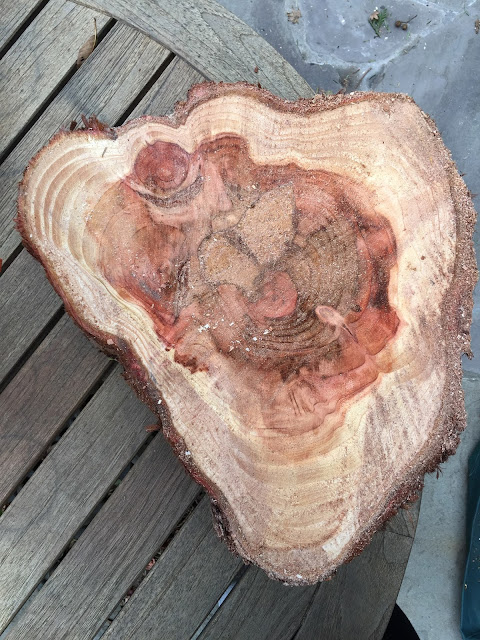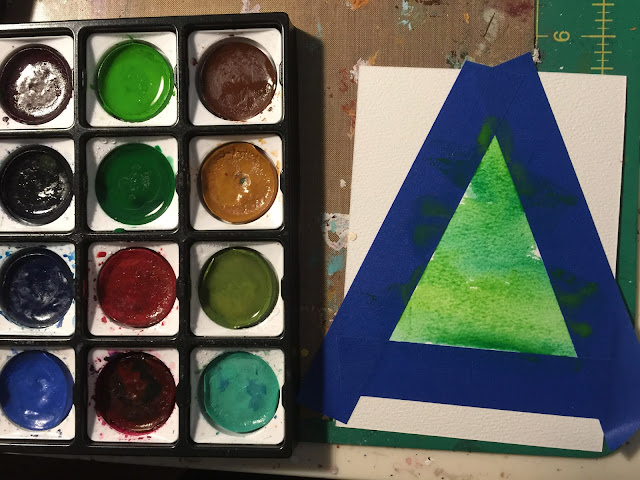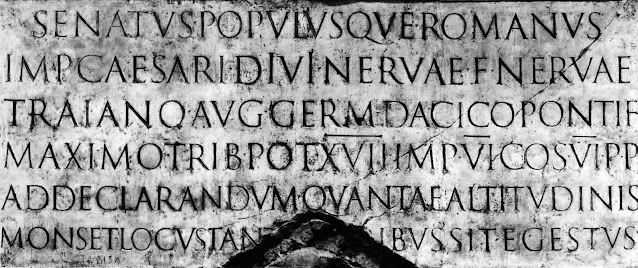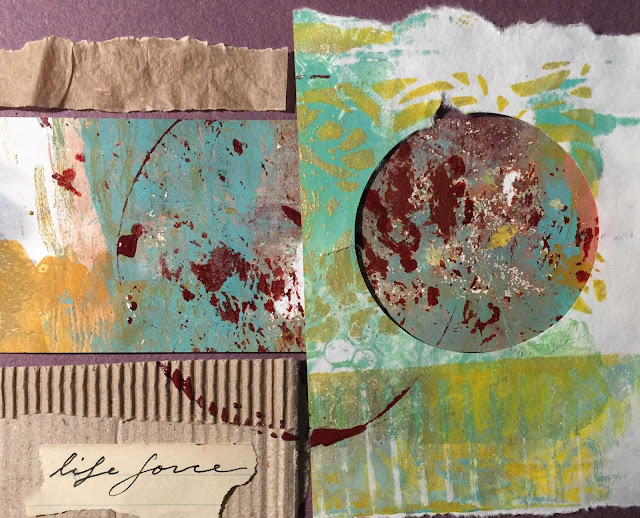The wind bellowed down our hill the night before last, shaking our house and waking me up. At 3:30 I got up to close the window that had been creaking back and forth in the wind. At four o'clock, I heard a boom outside and knew something big in our yard had come crashing down. We've lost trees to storms in previous years. I thought of the three trunk stumps in the back. Instead of taking the trees down completely, we had someone carve bears in the stumps left behind.
 |
| The tree broke the top bear in the stump into two pieces |
We planted redwood trees years ago on the hill at the back of our house. Like twigs at first, they now tower 4 or 5 stories above us. Their trunks have expanded so that the circumference of the biggest one is 21 feet around. They appear to be strong, sturdy, and indestructible. Their roots fill the hill so that it is hard to plant anything beneath them. But they are vulnerable. The one closest to the bottom of the hill has been struck by lightning a long time ago. The trunk split into two trunks and continued to grow skyward. Closer to the top, the bigger trunk again was damaged, split, and now has four trunks pushing towards the sky.
The lesser of the two original trunks broke from the tree and crashed down in the wind. We were lucky because it came down parallel to our house. The wound left on the tree runs down the side for four or five feet, glaringly creamy white in the sun. The telephone pole-like remains on the ground reached almost to the other side of the yard forty feet or more, the size of a small tree, heavy enough to smash everything underneath.
The fallen tree pulverized one bear stump, the bears dissolving into crumbled wood, and cut another stump in two. The Pride of Madeira bush that had been thriving and the Carpet roses near the stump disappeared under heavy branches. The pear tree looked like it had a bad pruning job. The wisteria lost its crown. When we walked into the yard, we were stunned. We knew that this tree was weakened, but the task of removing it had always seemed monumental with either someone climbing up the trunks or a crane precariously reaching for the top. So we left it, hoping that the trunks would withstand the wind.
 |
| The remaining bottom half |
We called a tree service and they cut the fallen tree into sections, carrying out five-foot pieces to their shredding machine. Bill asked them to cut a slice of the trunk to keep. With the clean-up completed, we looked at the tree slice. Bill counted the rings -- 21 in all -- 21 years since the lightning strike which had separated the trunk into more fragile pieces. We both ran our hands over the rough, still moist piece, marveling at the growth between each ring, and touched where off-shoots had started to grow.
We have one unscathed redwood stump with three bears. The tree, which should have died after it was cut to the stump, flourishes and sends sprouts from the base and the crown of the tree, which we continue to prune down close to the stump. The tree, though, resists our efforts to contain it. It has begun to grow over and around the bears. In ten years, the bears will be gone.
There is always a lesson in trees, whether you go tree-bathing or have to cut a tree down. Redwoods, especially, remind me of their strength and their vulnerabilities. They do not have a tap root like other trees; instead, their shallow roots spread far around them comingling with other redwoods, which stabilizes them all in windstorms. Their thick bark and less tannin help them to survive fires, but they have no defense from lightning that can damage the trunks. They are usually the tallest in an urban forest and can be a lightning rod. The damage to the tree and to our yard reminds us that nothing lasts forever, that even the most sturdy can be cut down, but usually something new will grow in its place.






















































